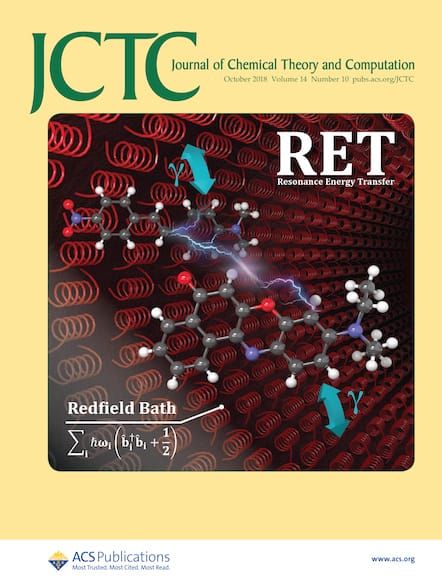相似约束CC2:激发态间高效耦合簇非绝热动力学。
IF 5.5
1区 化学
Q2 CHEMISTRY, PHYSICAL
引用次数: 0
摘要
尽管具有很高的精度,但标准耦合簇模型不能用于非绝热分子动力学模拟,因为它们在相同对称激发态之间的锥形交叉点产生非物理的复杂激发能。另一方面,相似约束耦合聚类理论为耦合聚类理论在此类动力学仿真中的应用提供了条件。在这里,我们提出了一个相似约束微扰双重(SCC2)模型,具有相同的对称激发态圆锥交叉点,具有正确的地形,拓扑结构和真实的激发态能。这是在保留标准CC2模型的有利计算缩放的同时实现的。我们举例说明了次氟酸和胸腺嘧啶的锥形相交模型,并将其性能与其他方法进行了比较。结果表明,在SCC2水平上可以正确有效地描述激发态之间的锥形相交。因此,我们期望SCC2模型能够实现大分子系统的耦合簇非绝热动力学模拟。本文章由计算机程序翻译,如有差异,请以英文原文为准。
Similarity Constrained CC2: Toward Efficient Coupled Cluster Nonadiabatic Dynamics among Excited States.
Despite their high accuracy, standard coupled cluster models cannot be used for nonadiabatic molecular dynamics simulations because they yield unphysical complex excitation energies at conical intersections between same symmetry excited states. On the other hand, similarity constrained coupled cluster theory has enabled the application of coupled cluster theory in such dynamics simulations. Here, we present a similarity constrained perturbative doubles (SCC2) model with same symmetry excited-state conical intersections that exhibit correct topography, topology, and real excitation energies. This is achieved while retaining the favorable computational scaling of the standard CC2 model. We illustrate the model for conical intersections in hypofluorous acid and thymine, and compare its performance with other methods. The results demonstrate that conical intersections between excited states can be described correctly and efficiently at the SCC2 level. We therefore expect that the SCC2 model will enable coupled cluster nonadiabatic dynamics simulations for large molecular systems.
求助全文
通过发布文献求助,成功后即可免费获取论文全文。
去求助
来源期刊

Journal of Chemical Theory and Computation
化学-物理:原子、分子和化学物理
CiteScore
9.90
自引率
16.40%
发文量
568
审稿时长
1 months
期刊介绍:
The Journal of Chemical Theory and Computation invites new and original contributions with the understanding that, if accepted, they will not be published elsewhere. Papers reporting new theories, methodology, and/or important applications in quantum electronic structure, molecular dynamics, and statistical mechanics are appropriate for submission to this Journal. Specific topics include advances in or applications of ab initio quantum mechanics, density functional theory, design and properties of new materials, surface science, Monte Carlo simulations, solvation models, QM/MM calculations, biomolecular structure prediction, and molecular dynamics in the broadest sense including gas-phase dynamics, ab initio dynamics, biomolecular dynamics, and protein folding. The Journal does not consider papers that are straightforward applications of known methods including DFT and molecular dynamics. The Journal favors submissions that include advances in theory or methodology with applications to compelling problems.
 求助内容:
求助内容: 应助结果提醒方式:
应助结果提醒方式:


